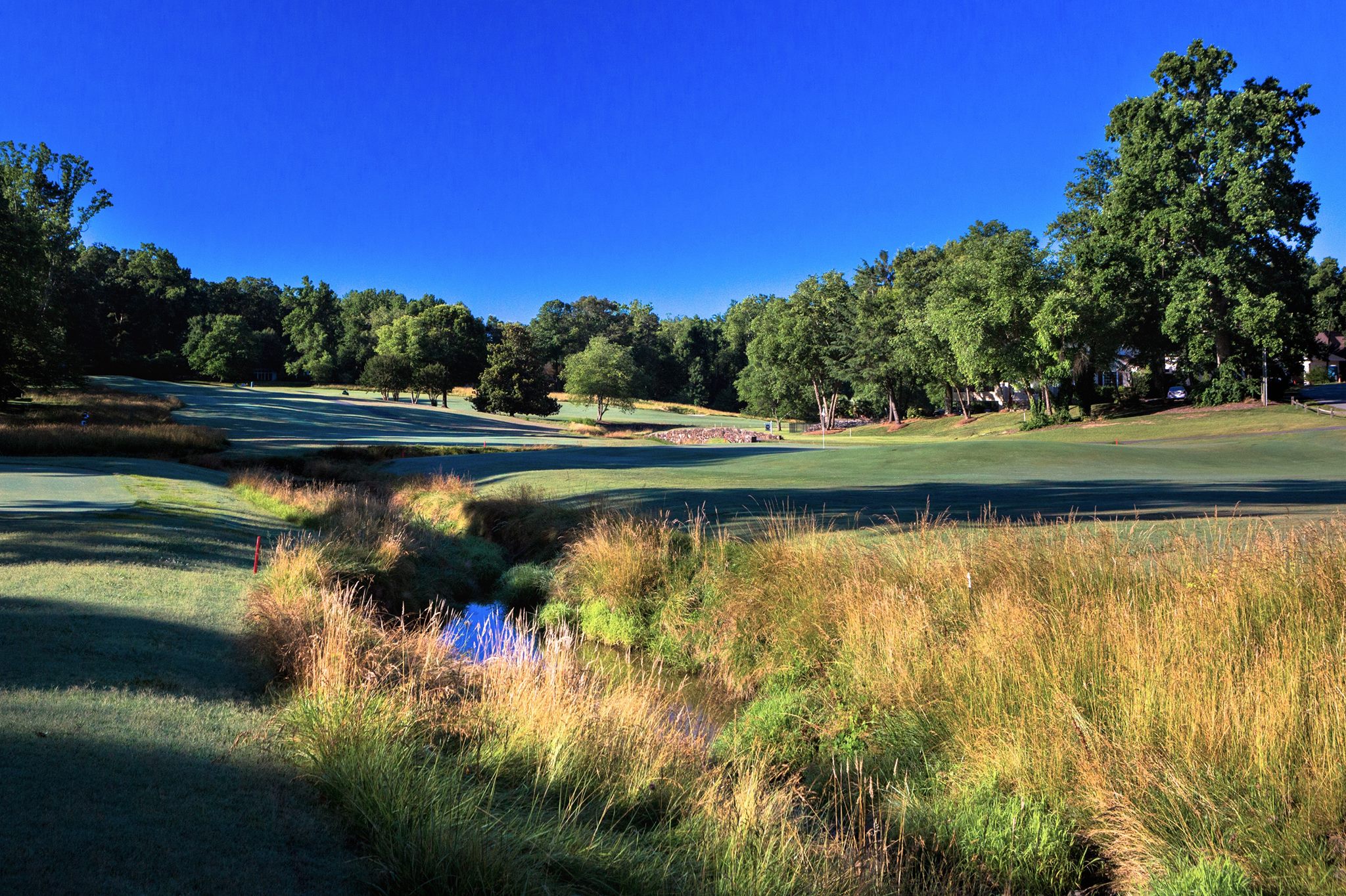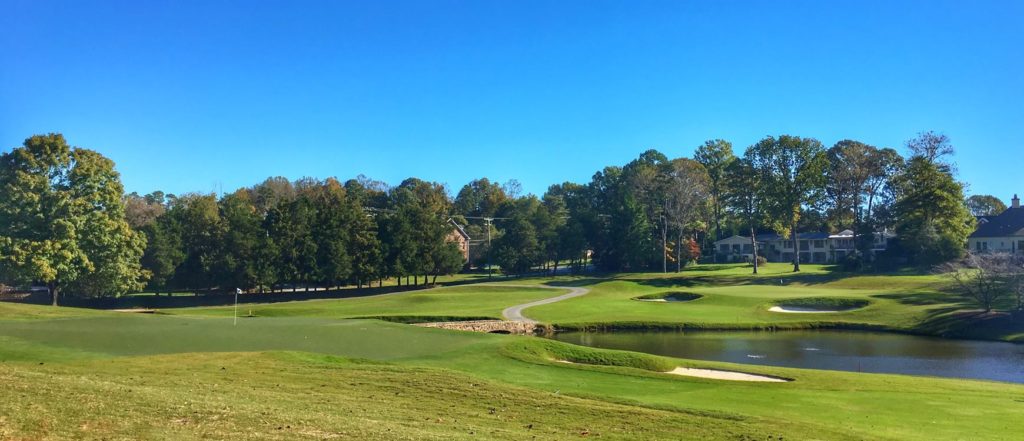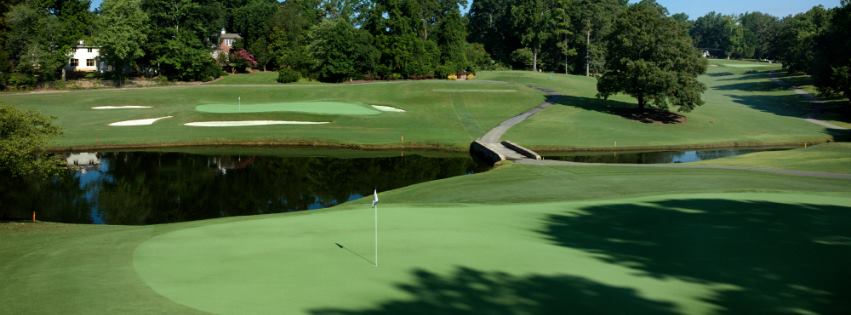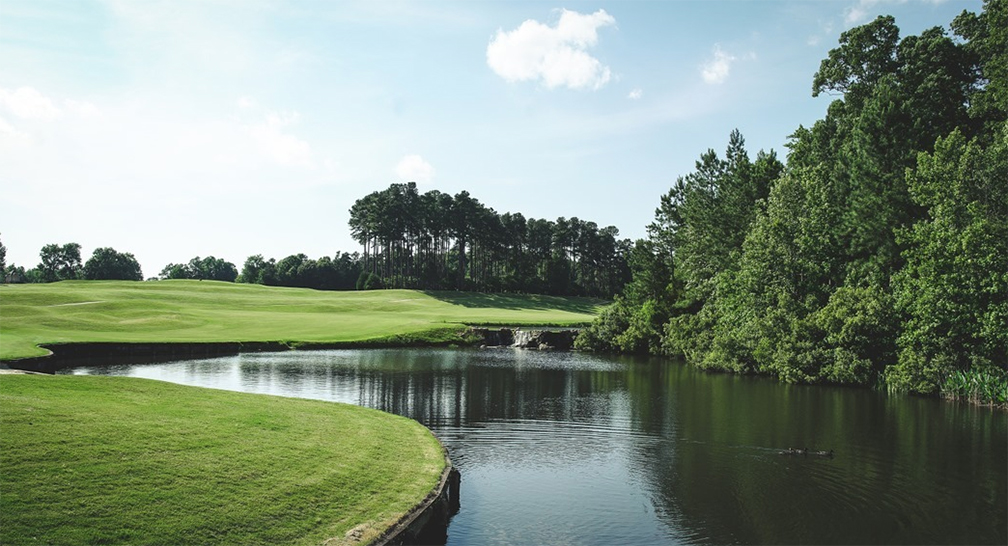
It will be difficult for golfers and course architecture aficionados to concentrate on the tournament at hand when Sedgefield Country Club in Greensboro, North Carolina hosts the PGA Tour’s Wyndham Championship on Aug. 4-7.
That’s because even though the event is the final PGA Tour tournament before the FedEx Cup playoffs and a last chance for the pros to earn a spot in the playoff field, it’s the sublime Donald Ross-designed and Kris Spence-renovated course that will be the real star of the show.
Owned by Raleigh-based McConnell Golf since 2011, Sedgefield Country Club had been a member-owned private club since being founded in 1926. It is renowned for its Ross-designed course as much as for being the host of the Wyndham Championship, the Piedmont Triad’s annual PGA Tour event that began in 1938 as the Greater Greensboro Open (GGO).

Sedgefield Country Club
Sedgefield Country Club history lesson
Sam Snead won the inaugural tournament and would go on to capture the GGO eight times. From 1938 to 1961, Sedgefield was the alternate site of the PGA Tour event with Starmount Forest Country Club, before Sedgefield hosted the GGO for 16 consecutive years through 1976. The tournament moved back to Sedgefield in 2008 and remains one of the Tour players’ favorite stops.
During his recent Media Day appearance, defending Wyndham champion Kevin Kisner talked about Sedgefield Country Club and the demands it places on a “total” game.
“Sedgefield is a ball-striker’s position golf course where you’ve got to hit a lot of draws off the tee,” Kisner explained. “It’s not overly long, which is helpful for me. And I love the greens. They are always in immaculate condition.
“Driving the golf ball in the fairway is a big part of playing well at Sedgefield,” Kisner added. “They get the Bermuda rough nice and juicy. And if you’re out of the fairway, it’s hard to make birdies. And we all know we have to make birdies at Sedgefield to compete.”
Arnold Palmer once said he regretted most never capturing the PGA Championship and the GGO – the latter because the Champions’ Board at Sedgefield comprises a veritable Who’s Who of golf’s glory years, including Ben Hogan, Snead, Byron Nelson, Billy Casper, Bob Goalby, and Gary Player.
Sedgefield Country Club and the Wyndham Championship rival only Colonial Country Club and the Charles Schwab Challenge in Fort Worth, Texas as a non-major championship to accumulate such a stately list of winners.
In 2006, Sedgefield Country Club commissioned Spence, a noted Ross course restoration architect, to make more than $3 million in course improvements and return the track to its original specifications. Spence also tweaked the challenge to accommodate modern golf technology.
Using drawings by Ross from the late-1940s, as well as a few aerial photographs from different eras, Spence restored the putting surfaces to their original sizes and rebuilt every bunker in their approximate positions to reflect the Ross style while also adding around 400 yards of length.
In 2012, with an eye on having Sedgefield Country Club’s course ranked among North Carolina’s Top 10, McConnell Golf converted the course’s green complexes from bent grass to the more heat-resistant Champion Bermuda.

How to play Sedgefield Country Club
Sedgefield Country Club’s course, which plays as a par-70 for the Tour event and measures 7,131 yards from the back tees, uses the site’s natural topography to help dictate the path of the routing and the play upon it.
The course works on a risk-reward system, challenging players for added aggression and daring shots that can provide scoring opportunities if those tactics are properly executed. There is a premium on putting the ball in the right place, keeping it on the fairway and finding the right angle to the green.
The small, undulating putting surfaces tend to slope forward – with some even falling off the edges – and allow for interesting hole locations.
Sedgefield is full of memorable holes but has its highlights. The 513-yard, par-5 fifth offers plenty of birdie (and even eagle) chances as a long, straight drive can facilitate a chance to reach the plateau green in two shots. Scoring always depends on where the hole is located.
The par-4 sixth hole is among the course’s more challenging, At 427 yards, it plays downhill to a creek and uphill to an undulating green. It’s a good example of the risk-reward equation that Ross worked into his courses. Most players settle for par here.
The 12th hole is the most difficult of the par-3s. A stream must be carried from the tee and its two-tiered green is protected by deep bunkers on either side. A par is once again accepted with grace on the tough-as-nails challenge.
The round here ends with the 505-yard 18th, which is played as a par-4 for the Wyndham Championship. The long uphill approach from a downhill lie will require accuracy to avoid the four bunkers protecting the approach and sides of the large green.
One of the best things about playing Sedgefield Country Club is its short-game practice area that opened in 2020. Designed on a two-acre tract of land in front of the clubhouse in an area that had previously been filled with tall pines and large oaks, the practice area was designed by Steve Wenzloff, PGA Tour’s longtime senior vice president of design services.
While the COVID-19 outbreak kept Wenzloff from getting onto the golf course to try to replicate some of the Ross features for the two new practice greens, he was able to incorporate ShotLink technology to review data from every Sedgefield green complex.
He built closely mowed areas off the side slopes and side shoulders of the Bermuda green for players to work on putting up the slope or practice a pitch shot they can hit up the embankment to a tight pin as well as bunkers and areas of rough from which they can practice.

Other great golf options in Greensboro
A round at Sedgefield Country Club requires the invite of a club member or reciprocal privileges; there are plenty of other options for great public golf in Greensboro, which might be second only to Pinehurst in its collection of must-play courses in North Carolina.
Designed by Pete Dye, The Cardinal sports a reputation as a formidable test. Its modern, 140-acre layout is a par-70 that meanders along a countryside stream, across a pair of lakes and through wooded glades. A number of holes feature Dye’s signature railroad ties including the 12th, which Dye called “the hardest par-3 I ever designed.” Founded as Cardinal Golf and Country Club, the course was restored to its original layout and lengthened in 2006 when brought under McConnell Golf ownership.
Forest Oaks Country Club, Greensboro
From 1977 through 2007 Forest Oaks CC played home to the PGA Tour’s Wyndham Championship, a testament to just how good this track is. Designed by Ellis Maples, and renovated by Davis Love III in 2002, Forest Oaks is carved out of mature, native hardwood forests. The fairways tumble through the edges of a neighborhood and are narrow and well-defined. Love expanded the greens, which are still daunting and demanding. No two holes are alike at Forest Oaks, and players of all levels can expect strategic challenges aplenty.
Grandover Resort, Greensboro
This destination’s two tracks, known as East and West, are ranked annually among the top 25 in this golf-mad state, demonstrating the level of quality reflected in both. Designed by David Graham and Gary Panks, the courses wind through oaks, pines and dogwoods amid the resort’s 1,500 acres. Fairness abounds, combined with hospitality and attention to detail that makes these courses always good choices for a daily double.
Starmount Forest Country Club, Greensboro
The first round was played at Starmount Forest on Aug. 1, 1930. Since then, the course has hosted the U.S. Women’s Open, the Greater Greensboro Open (as mentioned above), the Carolinas Open, and numerous amateur championships. The course was designed by noted Northeast architects Wayne Stiles and John VanKleek, who were utterly brilliant in their work. It is their only layout in the Tar Heel state and one of 140 they designed stretching from Maine to New Mexico from 1910-40. Starmount Forest covers 155 acres and is located a few miles from downtown Greensboro and less than 10 minutes from Greensboro’s PTI Airport.

Grandover East

